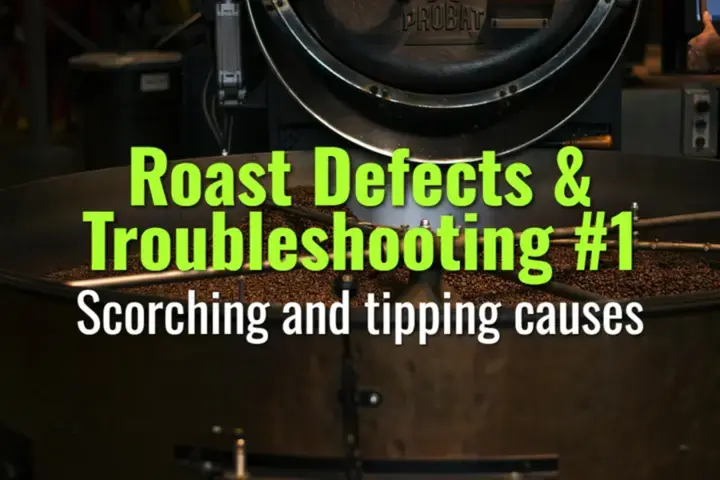Scorching and tipping causes
Understand why scorching and tipping occur during roasting and how to prevent them.
- Coffee Basics Nerds
- 1 min read

Key Concepts
-
Scorching:
-
Caused by excessive heat at the start of the roast or poor heat distribution.
-
Often seen as dark spots on the flat surface of the bean.
-
Can result from too high charge temperature or prolonged contact with a hot drum.
-
Tipping:
-
Occurs when the tips of the beans are over-roasted while the rest of the bean is underdeveloped.
-
Commonly caused by high heat flux, rapid airflow, or incorrect drum speed.
-
Prevention Strategies:
-
Optimize charge temperature according to bean density.
-
Ensure uniform heat transfer and adequate drum rotation.
-
Adjust airflow to prevent localized hotspots.
-
Monitor Rate of Rise (RoR) to avoid sudden temperature spikes.
-
Troubleshooting:
-
If scorching appears early, reduce initial heat and check drum contact points.
-
If tipping occurs, reduce airflow or spread beans more evenly in the drum.
-
Conduct sample roasts to calibrate settings for specific lots.
Summary
Proper control of heat, airflow, and drum dynamics prevents scorching and tipping, ensuring even roast color and flavor development.